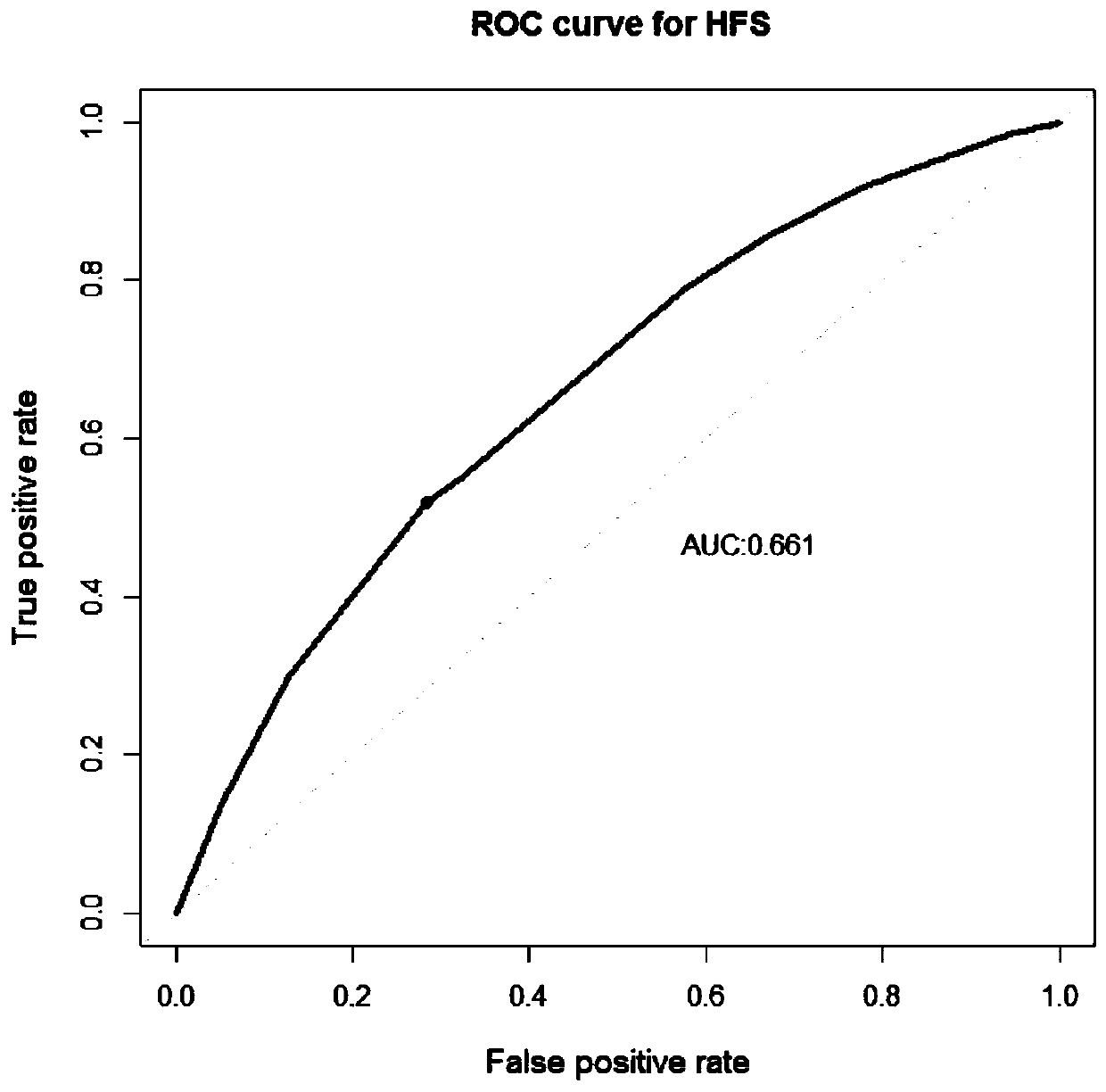SNP markers related to hand-foot syndrome and application thereof
A technology of hand-foot syndrome and markers, applied in the fields of genetic engineering and oncology medicine, can solve the problems of lack of genome-wide research and verification, limitations, etc.
- Summary
- Abstract
- Description
- Claims
- Application Information
AI Technical Summary
Problems solved by technology
Method used
Image
Examples
Embodiment 1
[0088] The collection of embodiment 1 sample and the collation of data
[0089] From 2008 to 2018, a large number of blood samples were collected from the biobank of Cancer Hospital Affiliated to Sun Yat-sen University. After sorting out the sample information, 1104 samples that met the following criteria were selected for genome-wide microarray scanning and single SNP Taqman genotyping :
[0090] 1. Selection of research samples
[0091] Inclusion criteria:
[0092] (1) Colorectal cancer patients with clear pathological diagnosis and clinical stage;
[0093] (2) The expected survival is greater than 6 months;
[0094] (3) Functional status score (KPS) ≥ 70 points;
[0095] (4) aged 18 to 80 years old;
[0096] (5) Have complete medical records (medical history, physical examination, related examinations, previous treatments);
[0097] (6) Patients are treated with chemotherapy regimens containing capecitabine;
[0098] (7) Participate voluntarily and sign the informed ...
Embodiment 2
[0119] TaqMan genotyping detection of embodiment 2 single SNP
[0120] The loci rs2853741 and rs1890775 associated with hand-foot syndrome found in Example 1 through genome-wide scanning were detected in an independent verification population, including 590 patients with colorectal cancer, including 181 cases of severe hand-foot syndrome (grade≥ 2) colorectal cancer patients, and 409 colorectal cancer patients with no or mild hand-foot syndrome (grade≤1). Then use Taqman (Applied Biosystems) genotyping to detect these samples, the specific steps are:
[0121] (1) Collect 3mL of peripheral venous blood with an EDTA anticoagulant tube, centrifuge at 3500r / min for 10 minutes, and then suck out the plasma;
[0122] (2) Remove red blood cells: add an equal volume of red blood cell lysate (10mmol / L Tris pH7.6; 5mmol / L MgCl 2 ; 10mmol / L NaCl), mix well by upside down, centrifuge at 4000r / min for 10 minutes, discard the supernatant, then add 5mL red blood cell lysate, mix well by tu...
Embodiment 3
[0138] Example 3 Construction and verification of hand-foot syndrome risk score model induced by the tumor chemotherapy drug capecitabine in patients with colorectal cancer
[0139] Further, we incorporated the significantly related loci rs2853741 and rs1890775 found in Example 1 and obtained in Example 2 into the construction of the hand-foot syndrome risk score model, and found that this combination can well distinguish mild (HFS grade≤1) and severe (HFS grade≥2) colorectal cancer patients with hand-foot syndrome.
[0140] The 514 patients in Example 1 were used as a training set to perform multivariate logistic regression, and the regression coefficient β was substituted into the formula to construct a hand-foot syndrome risk model. The correlation coefficient results of logistic regression are shown in Table 3.
[0141] The risk score formula is:
[0142] Risk score=(0.7588×rs2853741 type score)+(-0.5382×rs1890775 type score);
[0143] Wherein, the scoring of typing: fo...
PUM
 Login to View More
Login to View More Abstract
Description
Claims
Application Information
 Login to View More
Login to View More - R&D
- Intellectual Property
- Life Sciences
- Materials
- Tech Scout
- Unparalleled Data Quality
- Higher Quality Content
- 60% Fewer Hallucinations
Browse by: Latest US Patents, China's latest patents, Technical Efficacy Thesaurus, Application Domain, Technology Topic, Popular Technical Reports.
© 2025 PatSnap. All rights reserved.Legal|Privacy policy|Modern Slavery Act Transparency Statement|Sitemap|About US| Contact US: help@patsnap.com



